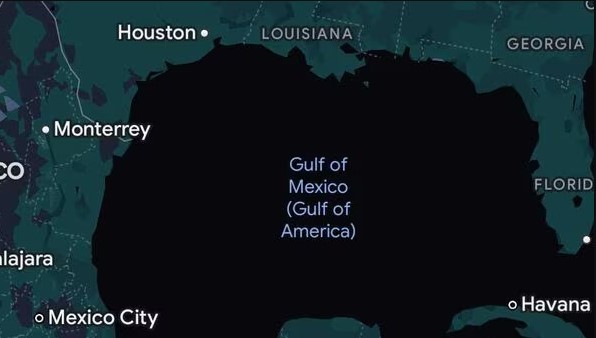Google has officially updated the name of the Gulf of Mexico to the Gulf of America in its Maps application, 1 Place 2 Names
Google has officially updated the name of the Gulf of Mexico to the Gulf of America in its Maps application
Following an executive order issued by former President Donald Trump. The name change is part of Google‘s long-standing policy to adopt official names based on governmental decisions. As of now, users in the United States will see the updated name, while those in Mexico will continue to see “Gulf of Mexico.” For international users, both names will appear simultaneously on the map.
This shift in naming practices is part of a broader effort by Google to reflect official government decisions on geographic names. The Geographic Names Information System (GNIS), managed by the United States Geological Survey (USGS), is the authoritative source for geographic names used by Google Maps. When changes are made to official names, Google promptly implements them to ensure consistency with the latest governmental updates.
The renaming of the Gulf of Mexico follows an executive order from Donald Trump, which directed the U.S. federal government to change the name. The U.S. Board on Geographic Names formally approved this update, and Google began rolling out the new name across its platform in line with the update. Along with the Gulf of Mexico, other well-known geographic landmarks are also being renamed. For example, Mount Denali in Alaska, which was previously known as Mount McKinley, is also undergoing a name change to comply with the new executive order.
The renaming of geographic features has been a controversial topic, especially when it involves regions with historical disputes over names. One notable example is the Sea of Japan, also known as the East Sea, which is a contested name between Japan and South Korea.
The Gulf of Mexico is now called the Gulf of America on Google maps in the US. The rest of the world still calls it the Gulf of Mexico.
That’s how far gone the US is. pic.twitter.com/kn29PV5XQp— Cynthia (my friends call me Cindy) Heinrichs (@Cynthia95001250) February 10, 2025
Google handles such disputes by displaying both names where applicable, depending on the user’s location. This method of displaying both names is being applied to the Gulf of Mexico, so users in the U.S. will see “Gulf of America,” while users in Mexico will continue to see the original “Gulf of Mexico,” and everyone else will see both names listed.
The decision to change the name of the Gulf of Mexico was announced by Trump during his visit to the newly named Gulf of America. In a statement, he referred to the renaming as a significant step toward restoring pride in American history. Trump’s administration framed the renaming as a reflection of American greatness, a sentiment echoed in his visit to the Gulf, where he remarked on the importance of this momentous occasion.
Google’s approach to updating geographic names is rooted in the principle of aligning with government-sanctioned names, regardless of their potential controversy. The company emphasized its commitment to updating Google Maps in real-time based on official changes provided by the GNIS. This ensures that the platform remains consistent with official maps and databases used by government agencies.
The name change to the Gulf of America will not only affect Google Maps but also other platforms that rely on GNIS for geographic names. Since the GNIS is the primary authority for place names in the U.S., its decisions are binding across various digital services, ensuring uniformity in the representation of geographical features.
Google can’t decide if it’s the Gulf of America or the Gulf of Mexico pic.twitter.com/SB91o9qYSW
— greg (@greg16676935420) February 10, 2025
As this change rolls out, Google continues to emphasize that regional variations will be respected. In places where local or national governments have different preferences for names, the updated names will appear according to the user’s location. This policy of respecting local names ensures that users in countries like Mexico are not confused by changes made for users in the United States.
The renaming of the Gulf of Mexico to the Gulf of America reflects a broader trend in geopolitics, where place names are sometimes altered to reflect national pride or political ideologies. Google’s role in implementing such changes shows the growing influence of technology companies in the dissemination of official information. By adhering to governmental decisions on place names, Google is positioning itself as a responsible actor in the realm of digital cartography, ensuring that the information provided on its platform is both accurate and in line with the most recent government decrees.
Google Maps alternates between Gulf of Mexico/America depending on how far you’re zoomed in pic.twitter.com/UC6LVMI2pC
— bryan metzger (@metzgov) February 10, 2025
Google Updation
The change of the Gulf of Mexico to the Gulf of America is part of a broader update to Google Maps, which aligns with the U.S. government’s official geographic naming practices. This move is a reflection of the company’s long-standing policy of adhering to governmental standards, and users can expect to see the updated names appear depending on their location.
Also Read – East Africa’s Geological Transformation: A New Ocean is Born
